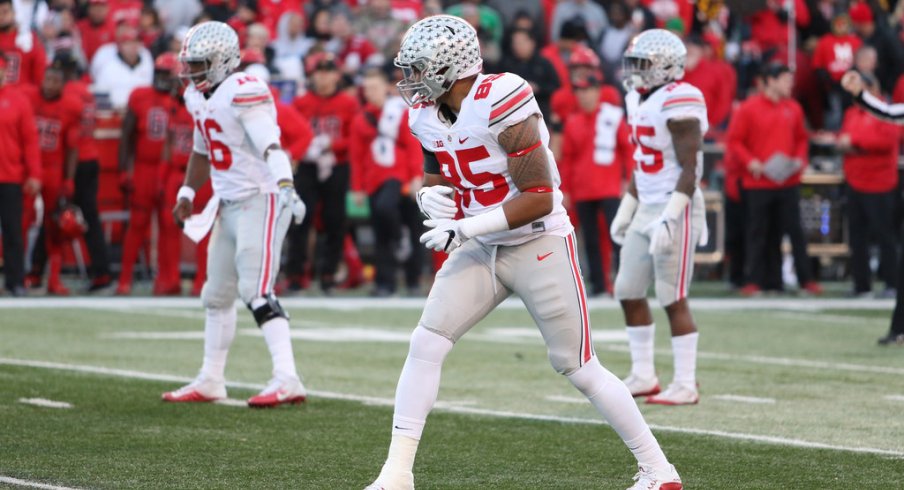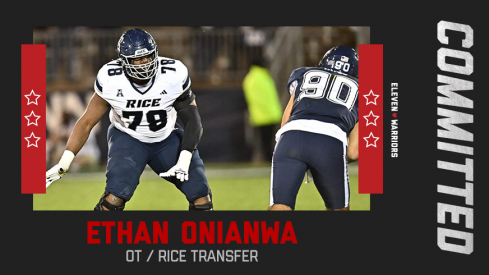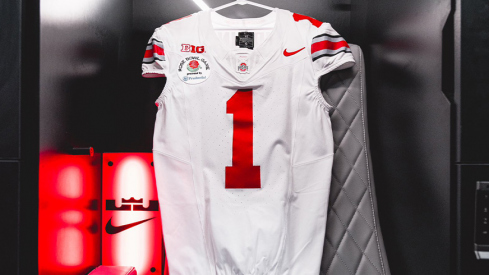Unlike the mostly stagnant outputs seen against Indiana, Wisconsin, and Penn State just a few weeks ago, the Ohio State offense has found another gear as the regular season enters its final month.
After nearly cracking 600 yards for the second consecutive week against Maryland, it appears that play-caller Ed Warinner has rediscovered his mojo at the most important time of the year. There are many reasons for the unit's recent success, but the process of scripting the first 12 plays of each game can't be overlooked. Not only have J.T. Barrett and company marched down the field and scored on the opening possession of their past three contests, that scripting has begun to open up additional opportunities later in games as well.
It's not as if Warinner, co-coordinator Tim Beck, and the other coaches have stumbled onto a cache of new concepts never seen before, and are simply catching opponents off guard. Rather, the Buckeyes are succeeding with many of the same plays Barrett has long been asked to execute. Now, though, the OSU offense has begun manipulating opponents to ensure those plays are run in ideal conditions.
By now it's become clear that Ohio State has few options as explosive or reliable as Curtis Samuel, and slowing him down has become a clear top objective for opposing coaches. However, instead of getting Samuel the ball early and often, as was often the case earlier in the season, Warinner has begun using the "H" slot receiver as a decoy to open up opportunities for some of his other playmakers.
The most effective way to do so has been with pre-snap shifts and motions. Any scouting report of Samuel and the Buckeyes will mention the threat of their star playmaker taking the handoff on a jet sweep around the edge, and defenses are drilled to react to his motion across the formation. So, Warinner would test Maryland's readiness for the concept on the 6th snap of the game.
The three-level 'flood' concept called should have worked just fine against the 'Cover 3' look run by the Terps, attacking two zone defenders along the left sideline, but the motion from Samuel was simply insurance to give Barrett an easier read on the play. With so many eyes following a single player in one direction, the defense had no chance to stop a downfield pass to the opposite side of the field. But it's a catch-22 for those defenders since the Buckeyes would gash them with the actual sweep on the following drive, picking up 16 yards and setting up an eventual touchdown.
Since Samuel is dangerous from any spot on the field, be it split out wide, in the backfield, or in the slot, defenses have adjustments in place to account for him in each alignment. However, instead of simply allowing the defense to comfortably line up with the proper call in place at the snap, Warinner stresses the defense with late shifts just before the snap, which sometimes allows Samuel's teammates to benefit most.
In today's college game, every defense is capable of masking coverages before the snap, perhaps lining up with two deep safeties before dropping only one in deep coverage only after the quarterback has received the ball. But the best way to see what a defense wants to do most in a certain situation is to take away the chance to mask their intentions.
Samuel's motion from the backfield in the example above wasn't just included within the first few plays of the opening script to get the ball to Marcus Baugh in the flat, but to see how the Maryland defense would adjust to movement. Once Warinner saw that the Terrapins didn't change their call on the play (Cover 1) and simply rolled it to the new alignment, the ball was then in his court.
After the initial 12-play script had been called, Warinner used what he had seen from Maryland during that initial stretch to dictate the way he called the remainder of the contest. Though Samuel ran the ball three times and caught a short pass during the first three Buckeye possessions, Warinner knew it was time to be aggressive and look to create a big play.
The motion across the formation from tight end A.J. Alexander forced the Terrapins to declare their intentions, bringing the cornerback up in press coverage with no help coming from the safety. While other Ohio State receivers have sometimes struggled to get open in similar scenarios, Samuel is clearly more than capable of winning one-on-one battles against virtually any defender in the country, giving Barrett an open target downfield.
While the motion or shifts of one or two players may seem minute, the results can be devastating to a defense already giving up a talent advantage. Even the best units at the professional level struggle to adjust to these seemingly small movements, making the QB's job much easier by directing his eyes to a landmark or target before the play even begins.
This kind of movement doesn't just open up the passing game, though. On the very first snap of the game, Samuel and Baugh would motion out from the backfield to create an 'empty' formation with no one but Barrett in the backfield. The Terrapins followed those players outside, giving the Buckeyes a blocking advantage with only five defenders in the box, theoretically leaving no one to tackle the quarterback should he run the ball. Had the Terps left an additional defender near the line to still defend the run, Barrett would've had an easy pre-snap read and known to throw a quick 'snag' concept to his left.
While this weekend's matchup with Michigan State appears to heavily favor the Buckeyes, this is still the same defense that just one year ago held Ohio State to their worst offensive performance by far under Urban Meyer, and has become a philosophical counterpoint to the coach's offense. Additionally, the matchup with America's top defense also looms in the distance, and despite whatever Meyer may say publicly, these pre-snap movements were likely called with those two opponents in mind.
While lining up in one formation before snapping in another is just window dressing, it will have an effect on how both the Spartan and Wolverine coaches prepare for the final two matchups of the regular season. These staffs will have the choice to either add to their upcoming game plans with additional wrinkles that must be communicated on the fly, or to simplify and show their cards to Barrett and Warinner before the ball ever leaves the center's hand.



